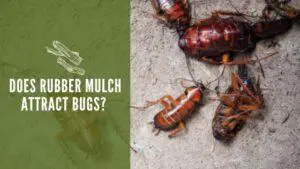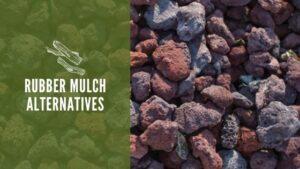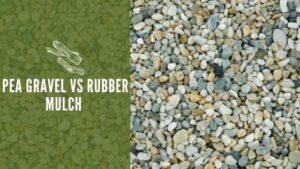Rubber Mulch vs Lava Rock
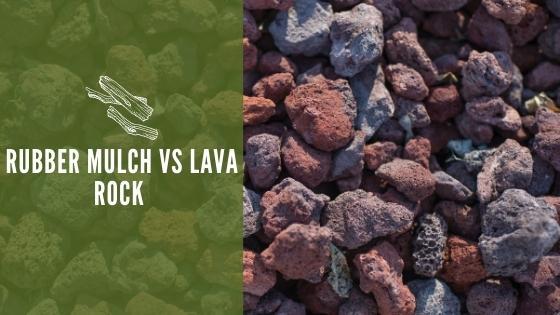
Today, you have many choices of mulch for your landscaping projects. Lava rock and rubber mulch are two of the most common. Let’s explore the pros and cons of these two popular landscaping mulch choices.
Is Lava Rock Better than Rubber Mulch?
Many people prefer lava rock because it has a natural look and visual contrast in the garden. Whether to choose rubber mulch or lava rock is typically based on practicality. Rubber mulch is synthetic and does not provide as much drainage as natural stone materials.
Both lava rock and rubber mulch are long-lasting materials that do not break down quickly but do not add any nutrients to the soil as wood mulch does.
The initial cost of rubber mulch is often much higher than natural stones, but this is not necessarily the case for lava rock. Lava rocks come from volcanic fields and are collected or mined. Rubber mulch is made from tires that have been processed and ground into the consistency of a mulch. Both options are low-maintenance.
Lava Rock Pros and Cons for Landscaping
Initially, lava rock can have a bigger price tag than rubber mulch. It is more expensive than pea gravel because it is not as plentiful. It is formed when lava from volcanoes cools down, and gases escape and form air pockets. This is why lava rock is so lightweight compared to its size.
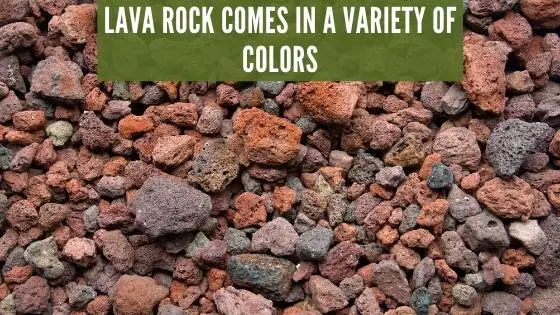
Lava rock is available in black, gray, and reddish-brown shades, depending on the minerals present as the lava cools. As lava rock slowly wears away due to erosion, it adds minerals to the soil like calcium, magnesium, and iron. However, it does not do so in quantities that are noticeably beneficial to plants. Because it is porous, it provides excellent drainage, which prevents fungal growth. Lava rock is an excellent weed suppressor, and it protects the soil from erosion.
Rubber Mulch Pros and Cons for Landscaping
Compared to lava rock, rubber mulch is less expensive initially. It does not tend to compact, and you do not need to top it up. It can last well over a decade without any noticeable degradation. Rubber mulch contains colorants to give it a more natural appearance, and many people choose it for its durability more than for aesthetics.
Rubber mulch looks like wood chips from a distance, but it will never have a natural appearance when viewed up close. It always has a shiny appearance that gives it away. Many people prefer the look of natural stone for this reason.
Rubber mulch is a synthetic material that breaks down over time. Rubber mulch leaches toxic compounds into the soil when exposed to sunlight, such as zinc and heavy metals. This is a concern for plants and animals that might contact it. There is also concern about it breaking down and making its way into waterways, where it can harm aquatic life.
Rubber mulch breaks down more slowly than wood chips and other organic mulch material, but it leaves behind substances of concern in the soil and water. If you consider using it for landscaping, you need to be aware that the chemicals that leach out from rubber can harm your plants in some cases. It is better used for areas where you do not want to grow ornamental plants or plants to consume.
Both lava rock and rubber mulch are inorganic materials and do not break down and add nutrients to the soil. Lava rock is more expensive initially, but you will probably never need to replace it. You will not need to replace rubber mulch more than once a decade, but it does break down over time.
One of the main concerns is that rubber mulch leaves behind toxic chemicals as it breaks down and lava rock does not.
Lava rock is a better choice when looking for an environmentally-friendly solution to your landscape needs. It is a big investment initially, but its beauty will last for a long time. It also has better drainage and is better for plants. When it comes to the look, rubber mulch will never look as natural as lava rock. Which one is right for your needs comes down to your goals and primary concerns.

